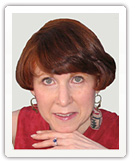e-Tips
Generational Differences in Communication
The challenge of working with the communications styles of the different generations is what comes up most often in my programs and discussions. It’s important to recognize that it’s not just about technology. The medium is only part of the message and is a useful, but sometimes distracting and ineffective tool. These tips will help multi-generational communication to achieve desired results.
Don’t confuse “efficient” with “effective.”
- Gen Xers say: Boomers over-explain. “Cut to the chase and get on with it.”
- Boomers think Millennials/Gen Yers tend to be blunt, abrupt and impersonal – “a texting culture.”
- Each generation must learn to use discretion – not just what’s most comfortable – as to which communication medium to use based on:
- who the recipients are and their preferred medium
- which medium will be more effective in grabbing attention
- which medium will best convey the desired message
- where is the most appropriate place to display the message
- Sometimes in-person is more effective (and secure) than exclusive use of electronic media, even if it takes longer.
- Generations X and Y need to be more sensitive to privacy issues, either privacy laws or what other generations or people consider to be private. Gen X and Y often consider this to be a “control” issue. It will be interesting to see how attitudes on privacy change over time as they already have with Boomers.
- Knowing what to communicate is crucial. Gen Yers may be lax about communicating schedule changes to managers and co-workers, e.g., when they are coming into the office late, are sick, take days off, etc.
- The younger generations need to be aware of perceptions about their “engagement.” The older generations tend not to think people with earbuds in their ears are engaged and listening adequately when they are talking to them.
Please share your thoughts.
Phyllis
© Phyllis Weiss Haserot, 2010. All rights reserved.
* The generational chronology for easy reference: Generations are defined by the similar formative influences – social, cuBaby Boomersltural, political, economic – that existed as the individuals of particular birth cohorts were growing up. Given that premise, the age breakdowns for each of the four generations currently in the workplace are approximately:
Traditionalists: born 1925-1942
Baby Boomers born 1943-1962
Generation X born 1963-1978
Generation Y/Millennials born 1979-1998
Phyllis is available to speak at your organization or at firm retreats on inter-generational relations and organizational effectiveness topics. Call or e-mail for a list of topics or to custom-tailor your own.
Check out *Next Generation, Next Destination*, our blog about succession/transitioning planning and the generations. Visit, comment and subscribe by RSS feed or e-mail. http://www.nextgeneration-nextdestination.com.

